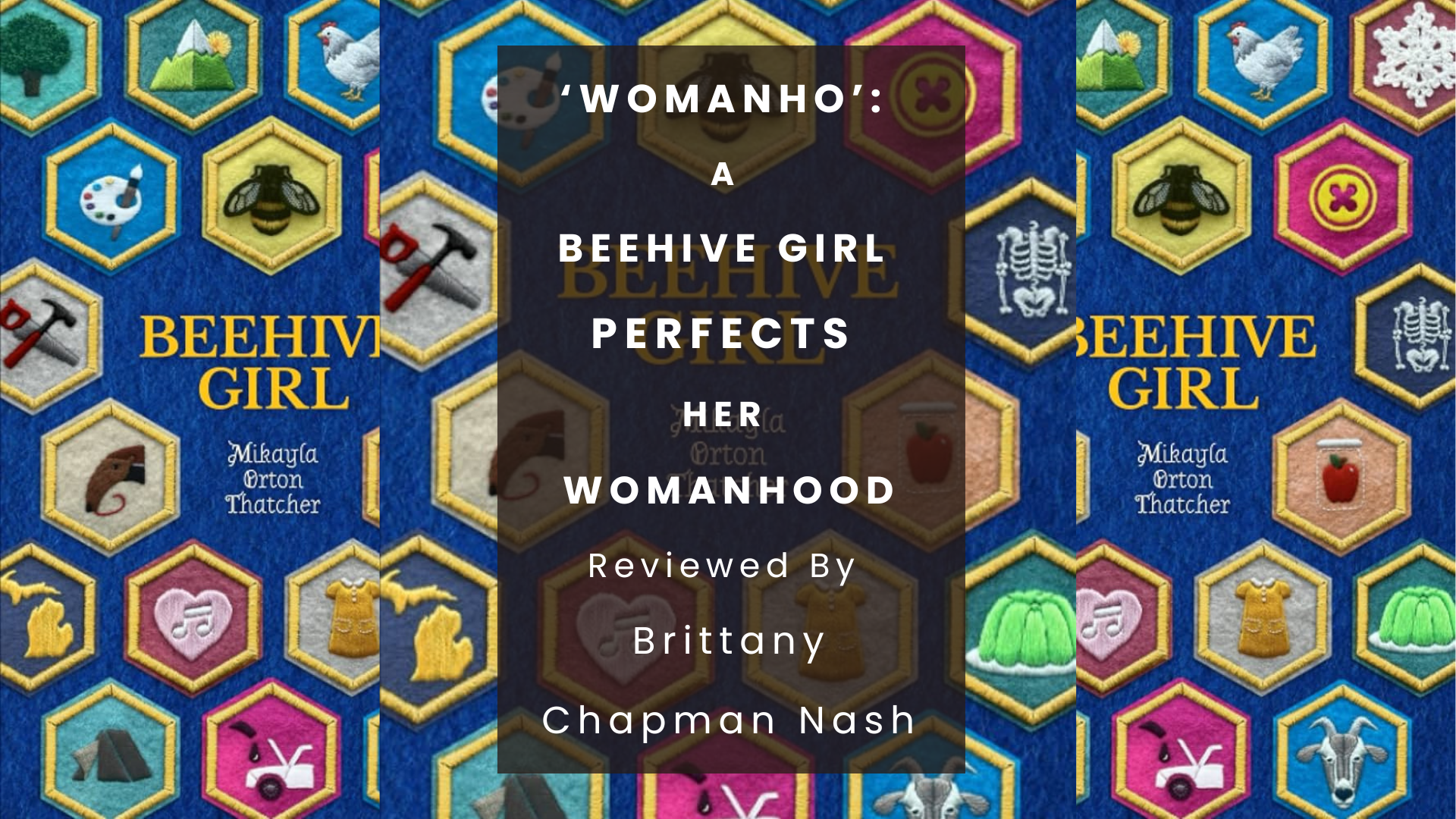Articles/Essays – Volume 57, No. 3
“Womanho”: A Beehive Girl Perfects Her Womanhood | Mikayla Orton Thatcher, Beehive Girl
Beehive Girl is a delightful book. Mikayla Orton Thatcher takes the reader on her journey completing the 1915 Beehive Girls program—an invigorating and intensive achievement plan for young women in the Church of Jesus Christ of Latter-day Saints. It was the first in a long line of recognition programs in the Young Women organization. Introduced to Beehive Girls through an article in a Church magazine, Thatcher located their manual online and was enthralled by the full-bodied approach to growth in its antiquated list of requirements. They were a stark departure from the requirements in the Personal Progress program she knew as a young Latter-day Saint, where spiritual development was emphasized. The original Beehive Girls program demanded an intentionality that Thatcher found simultaneously charming, challenging, and grounding. Thatcher learned that the Beehive watchword was “Womanho” (“wo” for work, “man” for mankind, and “ho” for home) and their stated purpose was to “perfect our womanhood.”[1] She was inspired to “be the woman these early [Young Women] leaders envisioned” and eagerly began a years-long process fulfilling the requirements, including plucking her own chicken, doing one good turn daily, and sleeping with her windows open for two months (11). The universal joy of new experience and self-improvement spills onto the pages, and Thatcher’s witty, conversational style is punctuated by profound insights as she fulfills the various “cells” of achievement. As the book progresses, the giggle-worthy fun of accomplishing old-fashioned goals becomes transformative to Thatcher as she internalizes deeper truths through her participation in the program. The intelligent crafting of Beehive Girl produces a fascinating fusion of past and present. As Thatcher blurs generational lines, modern readers find meaning in women’s traditional spiritual and temporal work and catch glimpses of the future through Thatcher’s little daughter, Jane, who often toddles along behind her mother, participating in the program, too.
If a reader is looking for a scholarly history of the Beehive Girls program, this is not that book. It is first a memoir. Thatcher includes brief histories of the Young Women organization and Beehive Girls program and weaves in life sketches of eight Latter-day Saint women. In each of these areas, Thatcher takes care to be historically responsible, and I believe she achieves that aim. Although Beehive Girl is not a history in the formal sense, the book is written through a historical lens as Thatcher consistently compares the past to the present and reflects on changes over time. For example, Thatcher invites a friend to help her complete the Beehive goal to “identify any fifteen trees.” After her experience, Thatcher concludes, “I think that the YLMIA general board, the creators of Beehive Girls, wrote this cell to be about trees. For us, though, this cell became about reconnecting with our innate curiosity and giving it some time to be giddy. It has also been about finding ways to socialize that are actually satisfying. . . . While developing friendships with other girls isn’t a stated goal in the Beehive Girls manual, I think it must have been a key part of the plan from the beginning” (45).

Incidentally, about two-thirds through Beehive Girl, I laughed out loud. In a moment of pure serendipity, I was featured as a character in the book! Thatcher describes a visit she made to the Church History Library where she hoped to find a treasure trove of records kept by young women . . . but had disappointing results. As a historian in the Church History Department of the Church of Jesus Christ of Latter-day Saints (CHD), I met with Thatcher that day because we share an interest in the Beehive Girls program. We exchanged knowledge and resources (thankfully she wrote that I was helpful—phew). She lamented that there were not more records from Beehive girls themselves. Where were their scrapbooks? The photos of their adventures? What about memories from Beekeepers (those who led the “swarms” of girls)? Unhappily, beyond what was published in contemporary Church magazines or manuals, only a handful of personal records documenting Beehive girls’ experiences are in the archives. The gold mine may still be buried in attics or basements, tucked away in boxes of great-grandmothers’ things. Hopefully soon Beehive Girls scrapbooks and other memorabilia will be donated to repositories such as the Church History Library where their stories can be preserved and shared.
Happily, though, I do have some great news for Thatcher. In the book she notes, with some regret, that an updated history of the Young Women organization has not been written; the last one was published nearly seventy years ago. She was not alone in recognizing that gap, and the Church History Department decided to fill it! Historians in the CHD have completed a comprehensive new history of the Young Women organization, and it is projected to be published by the Church Historian’s Press in 2025. The book takes a fresh look at the Young Women organization, and readers will no doubt enjoy taking a deeper dive into the history of the Beehive Girls program and how it shaped what Young Women eventually became. Thatcher’s book is timeless, but somehow knowing that it just precedes a forthcoming history makes this memoir feel even timelier and more significant.
To sum up, Mikayla Orton Thatcher joyfully captures and applies a pivotal development in the 150-year history of the Young Women organization. I wish she could be awarded the queen bee pendant and necklace alongside her 1915 sisters who also completed the program, but Thatcher teaches us that self-improvement, knowledge, and expanded experience bring their own rewards. It is meaningful that we get to tag along with her on the trip of a lifetime, with plenty of laughs, lessons, and good conversation along the way. Womanho.
Mikayla Orton Thatcher. Beehive Girl. BCC Press, 2013. 311 pp. Paper: $12.95. ISBN: 978-1948218825.
[1] Hand Book for the Bee-Hive Girls of the Y.L.M.I.A. (Salt Lake City: General Board of the Young Ladies’ Mutual Improvement Association, 1915), 3–5.


 Back to full Issue
Back to full Issue

